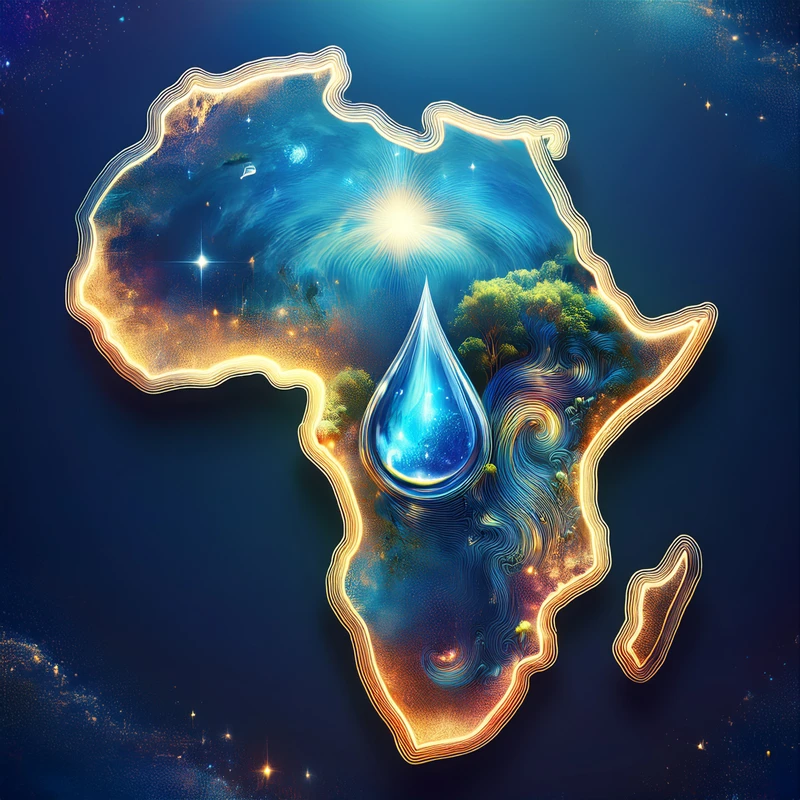
Concluding the Journey: South Africa's Sacred Waters
– Composed by Douglas Webber, and edited by Ekan Nangaku Leisching
As this exploration of sacred waters—a journey that began at Glastonbury springs, then drawn by a peculiar mist beckoning me eastward to the crystalline fjords of Norway—now draws to a close, finding a resonant resting place: South Africa, the home of Born as the Earth School Zen Academy (BEZA). This exploration mirrors the essence of water itself—life-giving, nourishing, and intimately connected to the very source of existence. And now, I find myself here, drawn to a landscape both starkly beautiful and deeply challenging.
Northern Cape: Embracing the Arid Heart
I awaken gently beneath the red sands of the Northern Cape, where the heat pulses like a living heartbeat, shimmering and insistent. Around me, the land breathes slowly, deeply, each breath a patient prayer for rain. The arid expanse stretches endlessly, with the Kalahari Desert‘s parallel red sand dunes and acacia-dotted savannas painting a picture of desolate beauty. In this stark landscape, I feel an ancient thirst stir within, pulling me gently upward, a yearning that echoes the profound spiritual connection the indigenous Khoisan people have with this ancient land. For them, water, precious in its scarcity, holds deep ancestral significance, with spirits believed to reside in the life-sustaining springs scattered across this dry terrain. Rain, a rare blessing, is often associated with powerful weather beings, including the revered !Khwa, the Rain Bull of their myths, who embodies the dual nature of water. At sacred sites like Die Oog (The Eye) near Kuruman, a perennial spring that has nourished life for generations, I sense a palpable reverence, a testament to water’s enduring power in this arid realm, a place where ancient rituals connect communities to the life-giving source. A haven where those who had transgressed laws and pursued by the authorities would find sanctuary. Authorities, not permitted to enter, bowed and waited outside the sanctuary of Die Oog. Finding shelter within the holiness of this place of repair, they were untouched by human’s rules. Caressed instead by the healing touch of my spirit and its cleansing, compassionate and regenerative motion of my endless eye. Eventually law enforcement would leave. Having absorbed the medicine of water, the hunted, now healed and forgiven were free to go – like the pure essence of my body.
Beneath this intense sky, an ancient impulse awakens within, lifting me gently from the embrace of the red earth.
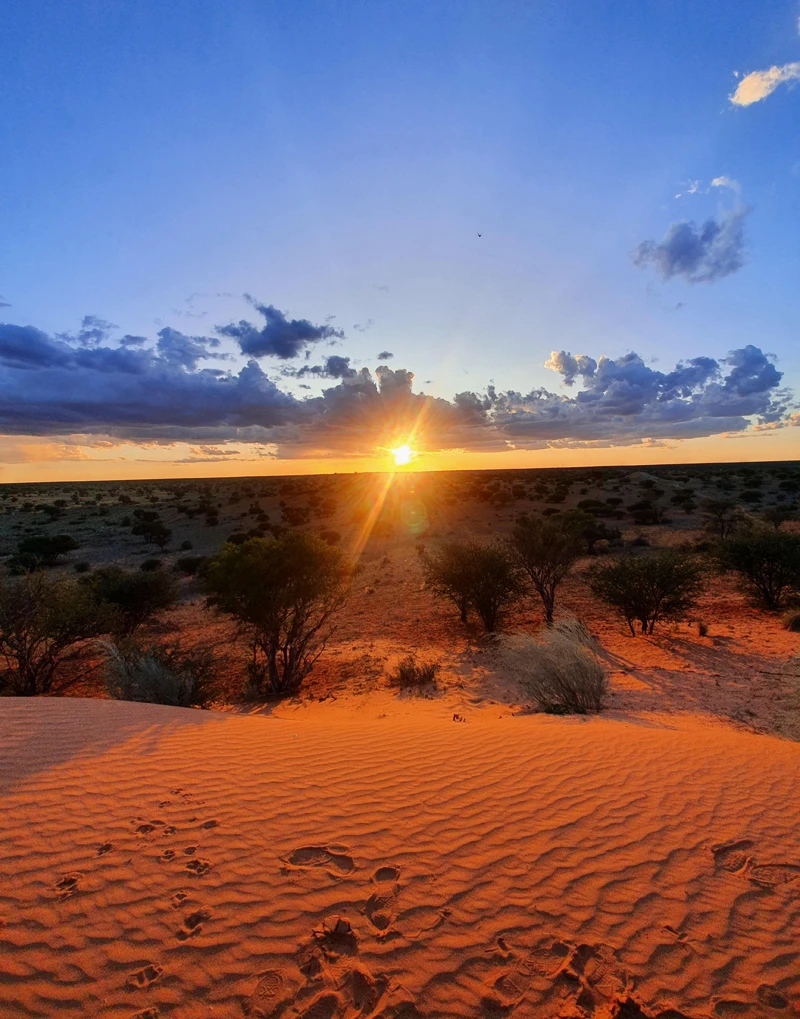
Rising silently, becoming lighter than air, I surrender to this ancient thirst that echoes through valleys and hills. Below, the faint outlines of riverbeds etch tattooed memories into the dust, ghostly reminders of abundance once flowing freely. Yet, even now, in this dryness, there is reverence. I sense the slow, patient rhythm of a land that knows how to wait, that understands scarcity as sacred, every drop a treasure, every cloud a whispered prayer.
Gathering Above the Barrier of Spears
Gathering strength, we converge above the mighty Drakensberg, uKhahlamba, the “Barrier of Spears” piercing the heavens. Here, the sky becomes heavy with promise. The Zulu call this place sacred, a communion between earth and sky, guarded by Nomkhubulwane, goddess of rain and fertility. It was she who commanded uBaduza – the great rhinoceros, to travel to the end of the world, and use his strength to turn the soil and make all the square edges round, so that the parched desert may receive her blessed rains and flourish again. Having reached the outer edge of his sacred task, he was told by the goddess to hook the setting sun upon his mighty horn and return home with it for a new day, and a new name.
As clouds grow dense and darken, I feel a thrilling pull—then release. I plunge, roaring downward, unfurling into the Tugela Falls, a cascade tumbling in wild, unbridled joy. Mist rises, creating rainbows, bridges between worlds, and here I sense Nomkhubulwane’s nurturing presence, blessing the land, renewing life.
Nomkhubulwane's Cascade
I surge onward, swift and purposeful, coursing through the rolling hills and lush valleys of KwaZulu-Natal. Drums pulse along the riverbanks, their rhythmic vibrations resonating deeply within me, echoing in ripples across my surface. The voices of Zulu women rise, vibrant and rich, singing praises as they perform sacred rituals—celebrating the Nomkhubulwane festival to honour their goddess of fertility, guiding initiates through the spiritual cleansing of Ukuthwasa, and immersing themselves in rhythmic ceremonies of renewal and ancestral communion. Every beat of the drum vibrates through the water, creating a profound spiritual connection, a living testament to the river’s sacred role in their lives.
Drums Along the Riverbanks
The beat of drums gradually fades into silence, the rhythmic ingungu and gentle harmonies of isicathamiya chants soften into quiet incantations, blending seamlessly with the smouldering embers, ash, and bone as trails of smoke ascend into dawn. In quiet reverence, I depart, silently witnessing as ancestral spirits gently withdraw, returning to their sacred realm. Westward now I soar, toward cooler mysteries hidden within Basotho lands. The Free State reveals itself, arid yet patient. The caves of Motouleng beckon softly, dark mouths, calling invitations. I seep downward, penetrating cool shadows, joining slow droplets that gather into pools below. Here, quiet echoes hold the murmurs of generations past, and I become—a silent guardian of ancestral waters, respected, revered. The Basotho pilgrims bring their prayers, their hopes, and I absorb these reverberations, becoming both witness and participant in their ongoing dialogue with the sacred. Within these hallowed caves, water is not merely a physical presence but a conduit to the divine, integral to rituals seeking healing, fertility, and ancestral connection. Pilgrims collect the sacred Sediba water, believed to possess healing properties, from the dripping cave walls, incorporating it into ceremonies that intertwine the physical and spiritual realms. At the cave’s entrance lies the ‘Sediba sa Bophelo’ or ‘Fountain of Life,’ where offerings are made, and the water is revered for its life-giving essence. In these sacred spaces, water serves as a bridge between the temporal and the eternal, a testament to its profound significance in the spiritual tapestry of the Basotho people.
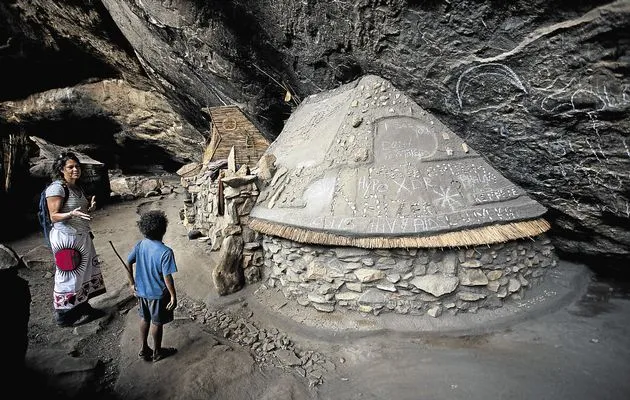
Into the Quiet Chambers
Flowing gently outward again, I join the rivers threading through the Mohokare Valley. Here, the earth feels softer, a fertile tapestry interwoven with springs and pools of profound spiritual resonance. Sedibe sa Moshoeshoe speaks the name of King Moshoeshoe I, a symbol of resilience, its waters carrying ancient healing secrets known intimately by those who seek ancestral guidance. Tempeleng, the sacred temple pool, nestles serenely within its rocky embrace, providing pilgrims a space for meditation, prayer, and quiet reflection—a place to reconnect with the divine. Diepsloot, alive with cascading waters, pulses gently with life’s continuity, drawing visitors into its cleansing embrace, purifying bodies and spirits alike. I see and feel these rituals, sensing deeply the subtle exchanges, the transmission of wisdom, and the enduring reverence these waters inspire, carrying forward the sacred bond between humanity and the natural world, weaving tightly the spiritual and cultural fabric of these communities.
Pools of Memory
Yet, the journey pulls me onward with compelling gravity, eastward toward the wild coast, where whispers of ancient stories speak of waters mysteriously retreating and reappearing—a myth gently passed down among generations. They say the waters vanish when evil spirits linger and only return when peace is restored within those who seek healing. With curiosity, I am drawn into the ancient depths of the Isinuka Mud Caves and Sulphur Pools, wondering if the legend might hold truth or remain forever an enchanting mystery. I seep tenderly into the mineral-rich earth, tasting its earthy essence, sensing its potent healing force. Named “Isinuka” by the Mpondo people, meaning “place of smell,” this sacred site breathes the pungent aroma of sulfur, a sign of its profound medicinal potency. Local women gather the sacred white clay, gifted from their ancestors, to lovingly spread onto their skin, shielding them from the sun’s fierce gaze. I witness sangomas – the medicine men and women of these parts, moving gently through the caves, whispering prayers and performing rituals, their presence deepening the connection between this place and the ancestral realm. My waters bubble softly through the thick mud, each rising bubble a gentle promise to cure ailments, soothing troubled stomachs, healing swollen feet, and cleansing skin, offering restoration to bodies and spirits alike. Those who enter the waters do so with reverence, trusting in the ritual to cleanse misfortune, ward off evil spirits, and restore harmony within. A knowing belief drifts among visitors, a gentle reassurance carried softly on their breath—that these waters hold the ancient wisdom to mend what has been broken, and to realign the spirit with the rhythm of the earth itself.
The mighty Letaba River
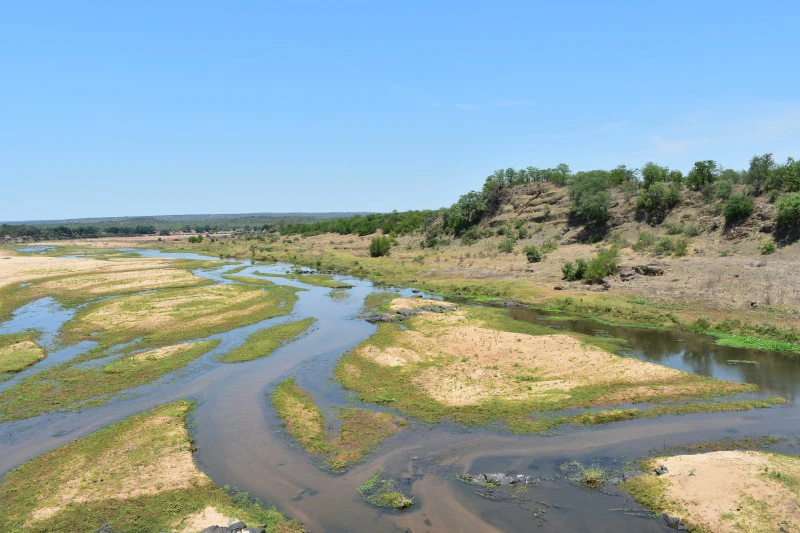
Northward again, the Letaba River welcomes me with powerful currents, a lifeblood for the land, a sacred stream in Limpopo. As I flow through this region, I sense the deep reverence the Venda people hold for water, a reverence that manifests powerfully at sites like the Phiphidi Waterfall. The fish eagle’s cry pierces the air, a reminder of balance, purity, and strength. Here, flowing waters sustain life, both physical and spiritual. Communities along these banks honour the river’s sacred nature, safeguarding it as a divine gift meant for future generations. Indeed, the very waterways of this land are often seen as conduits to the ancestors, and the Phiphidi Waterfall, known as LanwaDzongolo to the Venda people, is particularly revered as a dwelling place for these spirits. The pool below, Guvhukuvhu, is also considered sacred. Rituals unfold quietly on my banks and at these sacred falls, with offerings of beer and grain made on the rocks of LanwaDzongolo to invoke ancestral blessings. Those called to spiritual service immerse themselves within my depths and at the base of powerful cascades like Phiphidi, believing that beneath my surface lies a pathway to the ancestors, a crucible for transformation and rebirth.
This special connection between the Ramunangi and Netshiavha clans and the waterfall dates back generations, a testament to the enduring spiritual significance of these waters. Yet, stories also speak of caution and humility—of seekers drawn too deeply beneath the current, claimed by the very mysteries they pursued. I flow onward carrying these truths, etched gently into each ripple, a subtle testament to the profound, delicate balance between reverence, humility, and the unseen realms that I bridge.
Flowing Life Blood
At last, my journey draws me to the embrace of Lake Fundudzi, cradled gently within the lush Soutpansberg mountains—a sanctuary where the veil between worlds is thin. Named by the Venda people, who regard this lake with profound reverence, its shores seldom touched by outsiders, Lake Fundudzi embodies a deep mystery guarded by sacred traditions. Here, locals perform the respectful ritual of viewing its waters through parted legs, a humble gesture acknowledging ancestral spirits who dwell beneath. Within the lake’s depths resides a sacred presence—a legendary white crocodile, elusive guardian and ancient protector of sacred truths, and a revered python god whose undulating presence beneath the waters symbolizes fertility, regeneration, and the eternal cycle of life. The crocodile’s appearance is an omen, a rare glimpse granted only to the pure-hearted, embodying the lake’s mysterious and protective energies. Local legend speaks of kings passing from this world, their spirits claimed gently by the crocodile, which then returns to the shores to offer a sacred stone—symbolising the birthright and legitimacy of a new leader. Such stories bind the community to the timeless rhythms of leadership, renewal, and ancestral guidance. At dawn, as mist rises softly above the lake’s surface, the community gathers to perform the Domba dance, rhythmically mimicking the powerful and undulating movements of the python deity said to inhabit the lake’s depths, symbolising spiritual rebirth, wisdom, and the eternal cycle of life. Together, these beings serve as living embodiments of Lake Fundudzi’s profound spiritual significance, bridging the visible world with the ancestral realm.
Local lore speaks of a leper who, turned away by villagers, cursed their settlement, causing it to be submerged beneath these very waters. These waters and muds, believed to cure ailments and shield skin from the sun, are seen as ancestral gifts, deeply embedded in cultural wisdom passed down through generations. As I settle quietly into the lake’s serenity, I sense clearly the harmony here—a sacred equilibrium maintaining the lake’s eternal balance, silently uttering truths only to those who approach with humility and openness to its mysteries.
The Waters Remember
Through each landscape, I’ve flowed—through drought and deluge, through sacred caves and sunlit pools, through chants carried on riverbanks and whispers rising from mineral springs. South Africa has offered no simple passage—it has asked me to remember, to listen, to slow. From the red sands of the Northern Cape to the sacred drip of Motouleng’s caves; from the thunderous cascade of the Drakensberg to the quiet reverence of Sedibe sa Moshoeshoe; from the sulfur breath of Isinuka to the serpentine dances of Fundudzi—each place held memory, a distinct note in the great song of water. Here, I witnessed water not only as giver of life but as keeper of spirit, ancestor, healer, guide. And I carry these stories, this rhythm, as sediment in my depths. The South African journey is not just a passage across landscapes—it is a returning to source, a remembering of what water has always known.
The Eternal Cycle
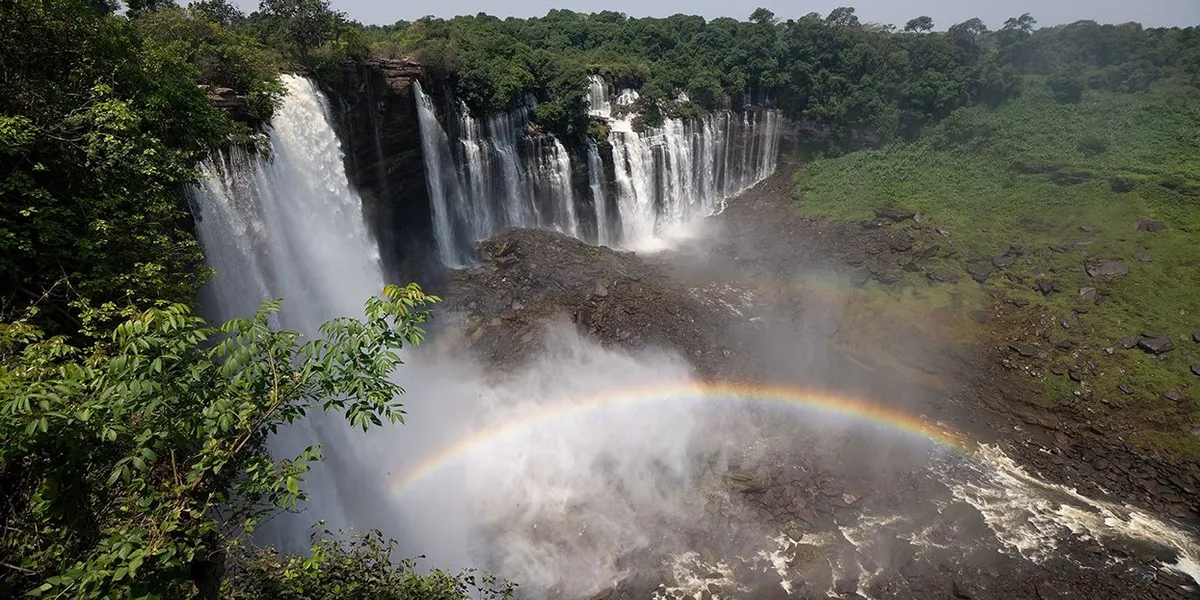
But I do not stop. I never do. I am the pulse beneath the earth, the breath between worlds. This water journey—beginning in Glastonbury’s springs, flowing through Norway’s crystalline fjords, and now echoing across South African soil—has been a remembering, a rekindling. I have spoken in whispers and roars, in stillness and storm, inviting those who walk the Way of Water to hear again. And now, at this threshold, I soften—becoming mist once more, ascending silently into the unseen. But the invitation remains: to sit beside the river, to feel the pulse beneath stone, to gather what has been forgotten.
The waters still speak—will you listen?
A Call to the Seekers
Throughout the world, people of the Way of Water—across continents, from east to west, north to south—priests, goddesses, shamans, and druids have given their human voices over to Water Speaking Water. In this eternal conversation, wisdom flows freely, carried by those who listen. Among them, Ekan Nangaku, an initiated Elder and Shaman in the ancient West African lineage of the Dagara (the Wild People), shares the teachings received through compassionate transmissions from Water itself. His mentorship and teachings illuminate the path for those called to the waters, those who seek to listen, to learn, and to carry forward the voice of the unseen.
The flow continues, and the invitation remains. Come, listen to the water’s voice, and let it guide you toward the next part of your path.
The waters are calling—will you answer?
